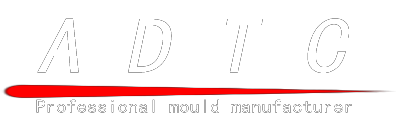(1) What is the most important and most decisive factor in choosing mold steel?
Forming method - can be selected from two basic material types.
A) Hot-worked tool steel that withstands relatively high temperatures during die casting, forging and extrusion.
B) Cold working tool steel for blanking and shearing, cold forming, cold extrusion, cold forging and powder press forming.
Plastic - Some plastics produce corrosive by-products such as PVC plastic. Condensation, corrosive gases, acids, cooling/heating, water or storage conditions caused by prolonged shutdowns can also cause corrosion. In these cases, it is recommended to use a stainless steel die steel. Mold Size - Large size molds often use pre-hardened steel. Integral hardened steel is often used in small size molds.
Mold use times - long-term use (> 1000000 times) of the mold should use high hardness steel, its hardness is 48-65HRC. Medium long-term use (100,000 to 1,000,000 times) today's focus:
The mold should be pre-hardened steel with a hardness of 30-45 HRC. For short-term use (<100000 times), the mold should be made of mild steel with a hardness of 160-250HB. Surface Roughness - Many plastic mold manufacturers are interested in good surface roughness. When sulfur is added to improve metal cutting performance, the surface quality is thus degraded. Steels with high sulfur content also become more brittle.
(2) What are the primary factors affecting the machinability of materials?
The chemical composition of steel is very important. The higher the alloy composition of steel, the harder it is to process. As the carbon content increases, the metal cutting performance decreases. The structure of the steel is also very important for metal cutting performance. Different structures include: forged, cast, extruded, rolled and machined. Forgings and castings have very difficult to machine surfaces. Hardness is an important factor affecting the metal cutting performance. The general rule is that the harder the steel, the harder it is to process. High speed steel (HSS) can be used to process materials up to 330-400HB; high speed steel + titanium nitride (TiN) coatings can process materials up to 45HRC; for materials with hardness 65-70HRC, Carbide, ceramic, cermet and cubic boron nitride (CBN) are used. Non-metallic inclusions generally have an adverse effect on tool life. For example, Al2O3 (alumina), which is a pure ceramic, has a strong abrasiveness. The last one is residual stress, which can cause metal cutting performance problems. It is often recommended to perform a stress relief process after roughing.
(3) What are the production costs of mold manufacturing?
Roughly speaking, the distribution of costs is as follows:
Cutting 65%
Workpiece material 20%
Heat treatment 5%
Assembly / adjustment 10%
This also clearly demonstrates the importance of good metal cutting performance and excellent overall cutting solutions for the economic production of molds.
(4) What is the cutting characteristics of cast iron?
In general, it is:The higher the hardness and strength of cast iron, the lower the metal cutting performance and the lower the life expectancy from the blade and tool. Cast iron used in metal cutting production generally has good metal cutting performance. Metal cutting performance is related to structure, and harder pearlitic cast iron is more difficult to process. Flake graphite cast iron and malleable cast iron have excellent cutting properties, while ductile iron is quite bad. The main types of wear encountered when machining cast iron are: abrasion, bonding and diffusion wear. Abrasive is mainly produced by carbides, sand inclusions and hard cast skin. Bond wear with built-up edge occurs at low cutting temperatures and cutting speeds. The ferrite portion of cast iron is the easiest to weld to the insert, but this can be overcome by increasing the cutting speed and temperature.
On the other hand, diffusion wear is temperature dependent and occurs at high cutting speeds, especially when using high strength cast iron grades. These grades have high resistance to deformation and result in high temperatures. This wear is related to the interaction between the cast iron and the tool, which allows some cast irons to be machined at high speeds using ceramic or cubic boron nitride (CBN) tools for good tool life and surface quality.
Typical tool properties required for machining cast iron are: high heat hardness and chemical stability, but also related to process, workpiece and cutting conditions; the cutting edge is required to have toughness, heat fatigue wear and edge strength. The degree of satisfaction with cutting cast iron depends on how the wear of the cutting edge develops: rapid bluntness means hot cracks and gaps that cause premature cutting of the cutting edge, damage to the workpiece, poor surface quality, excessive waviness, and the like.Normal flank wear, balance and sharp cutting edges are just what you need to do.
(5) What are the main and common processing steps in mold manufacturing?
The cutting process should be divided into at least 3 process types:Roughing, semi-finishing and finishing, and sometimes even super finishing (mostly high-speed cutting applications). The residual milling is of course prepared for finishing after the semi-finishing process. It is important to work hard in each process to leave a uniform distribution of allowance for the next process. If the direction of the tool path and the workload are rarely changed rapidly, the tool life may be extended and more predictable. If possible, the finishing process should be performed on a dedicated machine. This will increase the geometric accuracy and quality of the mold during shorter commissioning and assembly times.
(6) Which tool should be mainly used in these different processes?
Roughing process: round insert milling cutter, ball end mill and end mill with round nose radius.
Semi-finishing process: round insert milling cutter (round insert milling cutter with diameter range of 10-25mm), ball end mill.
Finishing process: round insert milling cutter, ball end mill.
Residual milling process: round insert milling cutter, ball end mill, vertical mill.
It is important to optimize the cutting process by selecting a specific combination of tool size, geometry and grade, as well as cutting parameters and appropriate milling strategies. For high-productivity tools that can be used, see the mold manufacturing samples.
(7) Is there one of the most important factors in the cutting process?
One of the most important goals in the cutting process is to create an evenly distributed machining allowance for each tool in each process. This means that tools of different diameters (from large to small) must be used, especially in roughing and semi-finishing operations. The primary criterion at all times should be as close as possible to the final shape of the mold in each process.
Providing a uniform distribution of machining allowance for each tool guarantees constant and high productivity and a safe cutting process. When ap/ae (axial cutting depth/radial cutting depth) is constant, the cutting speed and feed rate can also be constantly maintained at a high level. In this way, the mechanical action and the workload change on the cutting edge are small, so that less heat and fatigue are generated, thereby increasing the tool life. If the latter process is a semi-finishing process, especially for all finishing processes, unmanned or partially unprocessed. Constant material machining allowance is also the basic standard for high speed cutting applications.
Another advantageous effect of a constant machining allowance is the small adverse effect on the machine tool, the guide rails, the ball screw and the spindle bearings.


![14 frequently asked questions in the field of mold manufacturing [Part 1]](http://upload.digoodcms.com/173/image_1545894067_injection-mold.jpg)